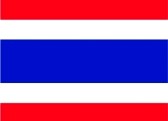All Categories







CHUXAY GARDEN Mango Fruit Seed 2 Seeds Delicious Non-GMO Fruit Juicy Fruits Robust Flavor High Yield Flourishing Makes Great Edging
Share Tweet
Get it between 2025-08-26 to 2025-09-02. Additional 3 business days for provincial shipping.
*Price and Stocks may change without prior notice
*Packaging of actual item may differ from photo shown
- Electrical items MAY be 110 volts.
- 7 Day Return Policy
- All products are genuine and original
- Cash On Delivery/Cash Upon Pickup Available








CHUXAY GARDEN Mango Fruit Seed 2 Seeds Delicious Features
-
Hardiness zone.10-11
-
Grow.Soak the seed in a cup of water for 24 hours.Wrap the seed in the paper towel.Place the seed and paper towel inside a sandwich bag, and store the seed in a warm place.Monitor the seed’s progress every few days, watching for sprouts.
-
Fruit.Mango trees grow relatively quickly, bearing fruit roughly four to eight years after planting.
-
Tip.Mango trees can grow indoors with sufficient light but often won't produce fruit.
-
Self-seeding.Grow from seed and enjoy growing with your family.
About CHUXAY GARDEN Mango Fruit Seed 2 Seeds Delicious
The mango tree growing zone is limited to tropical climates. Extended exposure to temperatures below 30°F can kill or severely damage a mango tree, as mango tree cold tolerance is low.Fortunately, while mango tree cold tolerance isn’t one its strong suits, mangos are cultivated in mango tree growing zones all around the globe and Americans can enjoy the delicious fruit year ‘round. A mango tree can grow fairly quickly and quite large, reaching a height of 100 feet or more with a canopy of 35 feet or more. Of course, mango tree growth rate, mango tree growth stages, and mango tree height vary based on soil and weather conditions. The average mango tree height for those in cultivation is generally much shorter as this makes for a more manageable harvest. But these trees shouldn’t be confused with dwarf mango trees. Dwarf mango tree varieties have naturally small to medium-size trees. The large leaves of a mango tree are leathery, 5 to 16 inches in length, and remain on the tree for a year or more. Flowers are produced in terminal panicles or clusters 4 to 16 inches long. Each flower is small with white petals and a mild sweet aroma. The flowers are pollinated by insects and less than 1 percent of the flowers will mature to form fruit. A mango fruit tree in full flower in the optimal mango tree growing zone is a beautiful sight indeed.






























